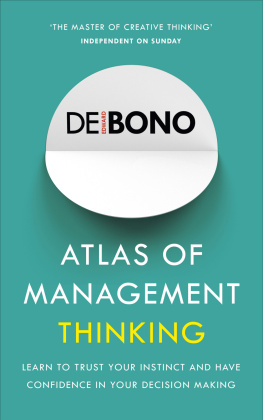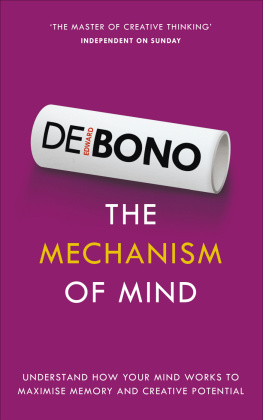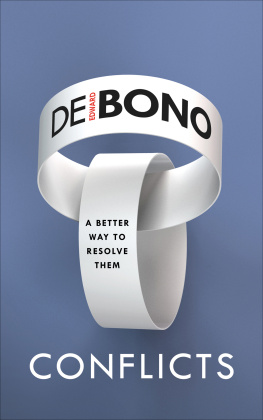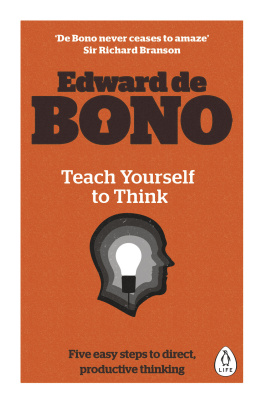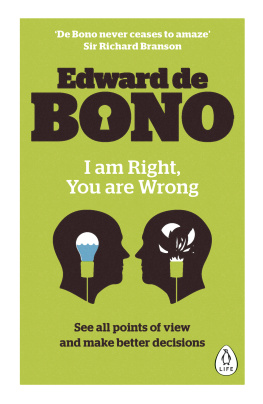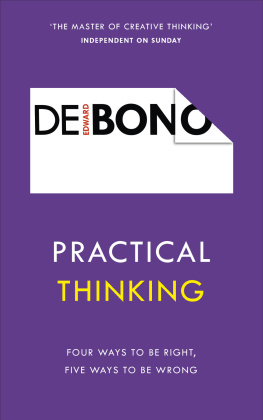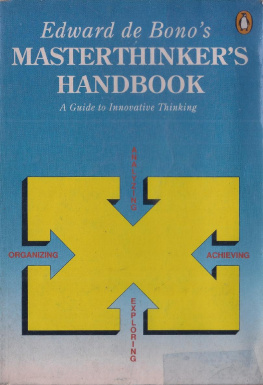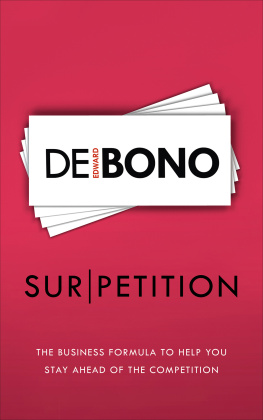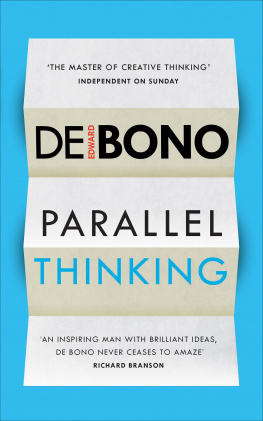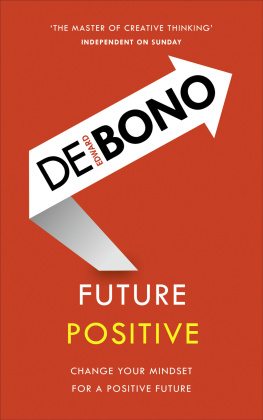Edward De Bono - Atlas of Management Thinking
Here you can read online Edward De Bono - Atlas of Management Thinking full text of the book (entire story) in english for free. Download pdf and epub, get meaning, cover and reviews about this ebook. year: 1981, publisher: Ebury Publishing, genre: Politics. Description of the work, (preface) as well as reviews are available. Best literature library LitArk.com created for fans of good reading and offers a wide selection of genres:
Romance novel
Science fiction
Adventure
Detective
Science
History
Home and family
Prose
Art
Politics
Computer
Non-fiction
Religion
Business
Children
Humor
Choose a favorite category and find really read worthwhile books. Enjoy immersion in the world of imagination, feel the emotions of the characters or learn something new for yourself, make an fascinating discovery.
- Book:Atlas of Management Thinking
- Author:
- Publisher:Ebury Publishing
- Genre:
- Year:1981
- Rating:5 / 5
- Favourites:Add to favourites
- Your mark:
- 100
- 1
- 2
- 3
- 4
- 5
Atlas of Management Thinking: summary, description and annotation
We offer to read an annotation, description, summary or preface (depends on what the author of the book "Atlas of Management Thinking" wrote himself). If you haven't found the necessary information about the book — write in the comments, we will try to find it.
Atlas of Management Thinking — read online for free the complete book (whole text) full work
Below is the text of the book, divided by pages. System saving the place of the last page read, allows you to conveniently read the book "Atlas of Management Thinking" online for free, without having to search again every time where you left off. Put a bookmark, and you can go to the page where you finished reading at any time.
Font size:
Interval:
Bookmark:

Edward de Bono studied at Christ Church, Oxford (as a Rhodes Scholar). He also holds a PhD from Cambridge and an MD from the University of Malta. He has held appointments at the universities of Oxford, London, Cambridge and Harvard.
In 1967 de Bono invented the now commonly used term lateral thinking and, for many thousands, indeed millions, of people worldwide, his name has since become a symbol of creativity and new thinking. He has written numerous books, which have been translated into 34 languages, and his advice is sought by Nobel laureates and world leaders alike.
The first book ever to be written deliberately for the right-hand side of the readers brain.
Much has been made of the research conducted into the left-hand side of the brain home to language and logic. The right-hand side works in images, whole patterns and undefined feelings none of which can be verbalised. This more elusive thinking often functions as what is loosely called intuition.
In Atlas of Management Thinking, de Bono shows us how to use the right-hand side. It is an atlas because it is a visual reference of images and illustrations that point the reader in the right direction (literally). For anyone who has ever been told to trust their instinct, or who is concerned with management and decision making, this book is a de Bono classic.
Also by Edward de Bono
Parallel Thinking
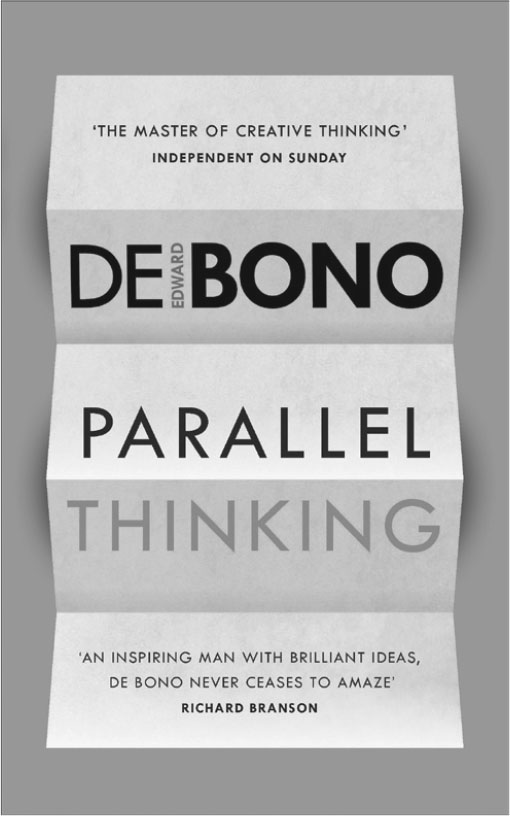
Western thinking is failing because it was not designed to deal with change.
In this provocative masterpiece of creative thinking, Edward de Bono argues for a game-changing new way to think. For thousands of years we have followed the thinking system designed by the Greek philosophers Socrates, Plato and Aristotle, based on analysis and argument. But if we are to flourish in todays rapidly changing world we need to free our minds of these boxes and embrace a more flexible and nimble model.
Parallel Thinking is an invaluable insight into the word of creativity; de Bono unveils unique methods of brainstorming and explains preconceived ideas of what creativity involves and is. This book is not about philosophy; it is about the practical (and parallel) thinking required to get things done in an ever-changing world.
The Happiness Purpose
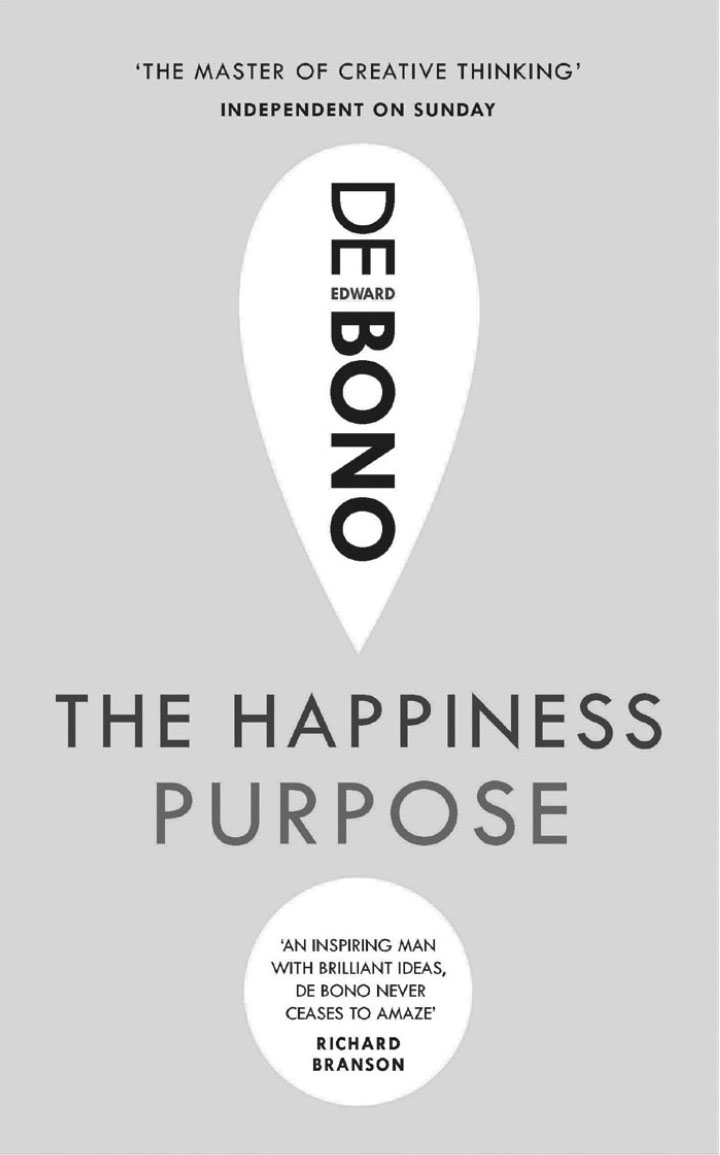
In this extraordinarily prescient book Edward de Bono sets out his method for achieving the ultimate 21st century goal: work-life balance.
Defined in terms of life-space and self-space, de Bono invites the reader to look at their life and measure the gap between these spaces the smaller the gap, the greater our chances at happiness; but if the life-space is vastly bigger than the self-space, our coping ability is compromised and anxiety is likely.
For anyone concerned with happiness and life-fulfilment this book is essential reading, and is perhaps more resonant with readers now than ever before.
Five -Day Course in Thinking
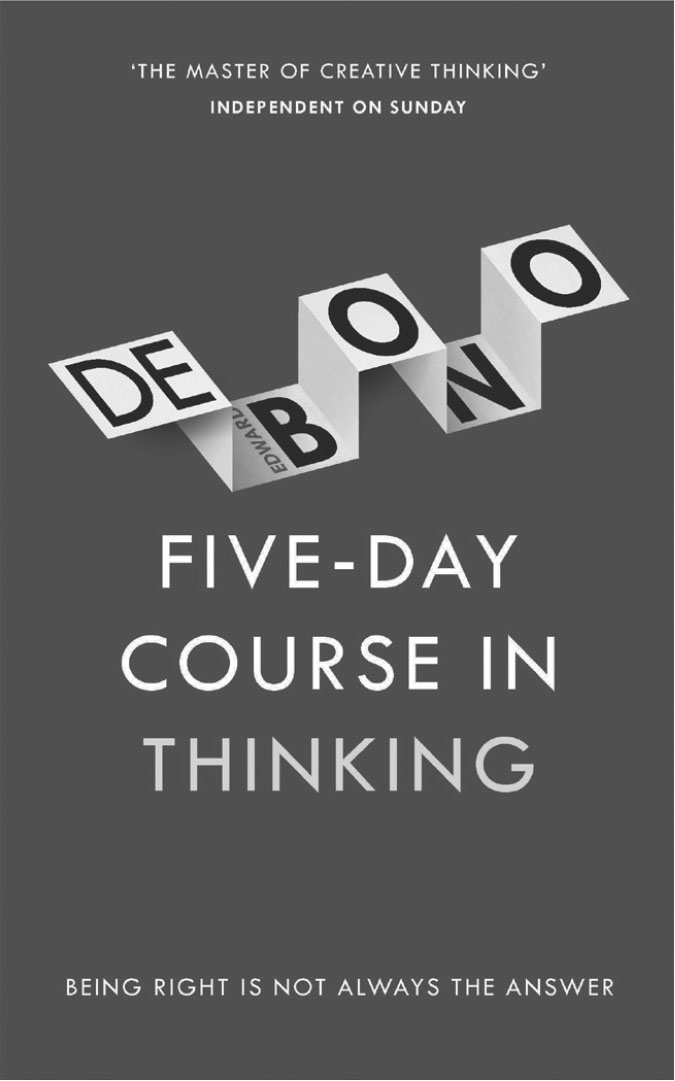
First published in 1967, this remarkable title from one of historys greatest minds remains a must-read in the world of creative thinking.
Based on the belief that an error can lead to the right decision, de Bono guides the reader through a series of problems and puzzles, all designed to help us analyse our personal style of thinking and to consider the potential methods that we never use.
There are three courses, each five days long and each created to focus on a different style of thinking. A true life-changer, this book will have you thinking in way that you never thought were possible.
Coming Soon
Future Positive
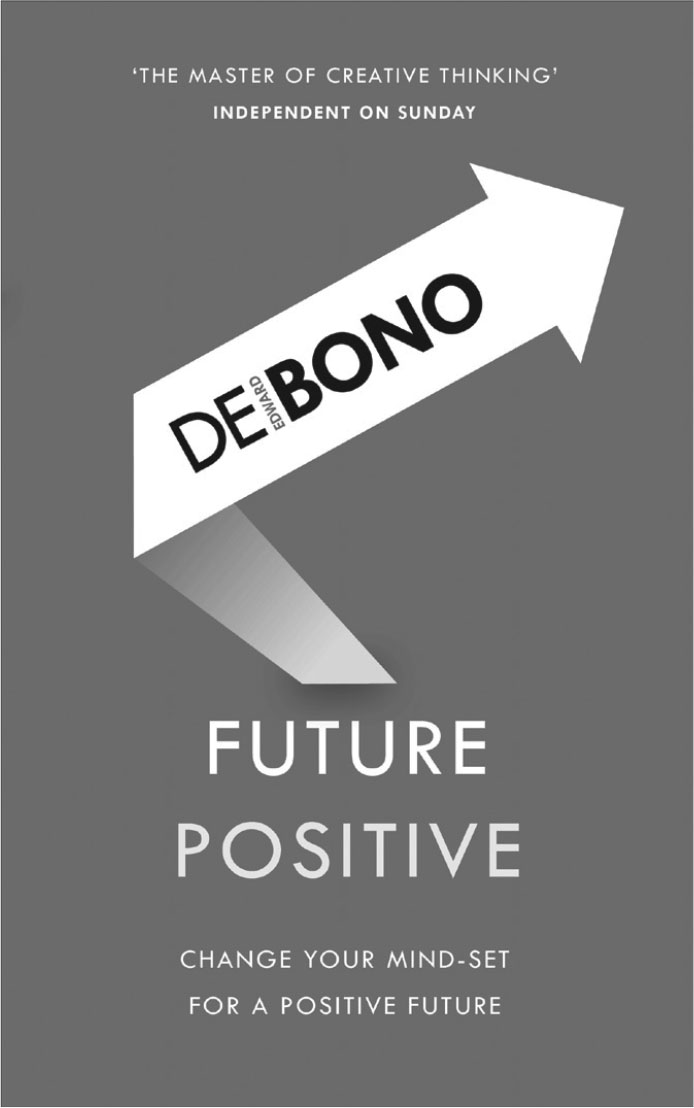
Why are we more prone to be negative? And how can we become more positive, both as individuals and as a society? We need to develop new concepts: some brand new and some slightly different. We have to make a deliberate and positive effort to secure a positive future; we must harness the focused power of human thinking unleashed from its pettiness.
Since Future Positive was first published in 1979, our belief in the power of positive thinking has only deepened.
De Bono was on to something in 1979: the future is positive if we want it to be.
Other Titles by Vermilion
The Six Value Medals
How to have a Beautiful Mind
How to have Creative Ideas
Think!
Six Frames
Serious Creativity
Lateral Thinking
The Mechanism of Mind
H + (Plus) A New Religion?

This unusual book needs an introduction more than most. I want to explain its purpose and why I wrote (and drew) it.
The book has two clear purposes: right-brain thinking, and communication. This may be the first book ever to be written specifically for the right side of the brain the intuitive side. I am not aware of any other book with that deliberate purpose. Its function as a communication system arises from that first purpose, but it can be used independently, and it was this use in communication that suggested the word atlas in the title. An atlas is a visual reference system, and although thinking is an abstract subject I believe we can create perceptual maps of its use.
Many people are aware of the value and power of intuition: of those feelings and images that are part of thinking but cannot be verbalised. Over the last few years there has been a good deal of experimental work that has sought to distinguish the operations of the two halves of the human brain. It is in the left half of the brain that the speech centre is located and this half seems to control our physical activities as well. In left-handed people it is the reverse. Left-brain thinking seems to be word-based and to proceed in a logical, sequential manner. It follows that all books tend to be left-brain books. The right brain, it seems, is concerned with a different sort of thinking: with images and whole patterns and impressions and what we call intuition.
This sharp division of functions smacks a little bit of Victorian phrenology. For my part I do not really care whether these right-brain functions actually take place only in the right brain or elsewhere. What I do think is important is the recognition of a type of thinking that is not dominated by language. Right-brain thinking happens to have become a useful term of reference for this. I shall also use the term image thinking, recognising that this spans all the way from actual images to undefined feelings.
Anyone who has been to one of my seminars knows that I accompany every thought with an image drawn on an overhead projector. In the course of a day I might cover five hundred feet of acetate with these images. They are idea pictures which represent relationships, functions and happenings, not physical reality. I believe that such images can be more powerful than words for conveying ideas because, unlike words, they exist completely at one moment in time. A scientist obtains the same effect when he looks at a graph of a complex relationship that would take many seconds to describe in words.
Font size:
Interval:
Bookmark:
Similar books «Atlas of Management Thinking»
Look at similar books to Atlas of Management Thinking. We have selected literature similar in name and meaning in the hope of providing readers with more options to find new, interesting, not yet read works.
Discussion, reviews of the book Atlas of Management Thinking and just readers' own opinions. Leave your comments, write what you think about the work, its meaning or the main characters. Specify what exactly you liked and what you didn't like, and why you think so.

